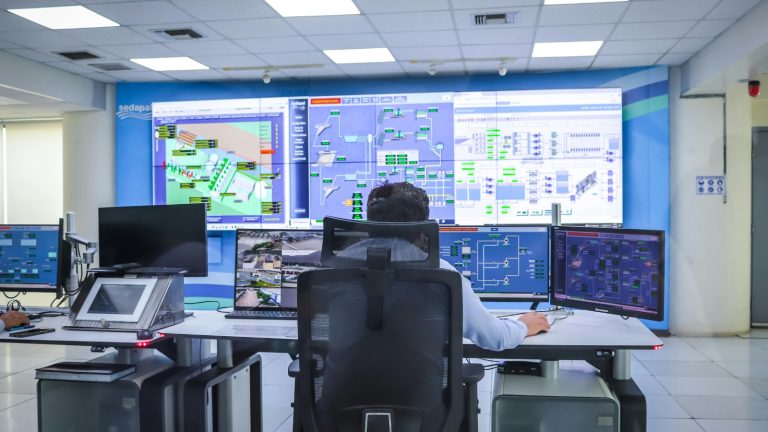Do you think the ‘good manufacturing’ lies in the ability to handle design, production and logistics smoothly? Well, it is time to wake up! Smooth manufacturing goes beyond that, and it is the right synchronicity between producing products and they reaching the customers. This is the reason many top manufacturing companies integrate modern technology into their operations to unify each angle. Warehouse Management System (WMS) and a Supply Chain Management System (SCM) are two distinct tools that appear to be similar to the outer world, yet actually serve different manufacturing purposes. When to use WMS and when to use SCM is the key concern here.
In this article, we talk about what WMS is and how it differs from supply chain systems.
What is a Warehouse Management System?

- WMS signifies a software-based approach that takes care of everything in its daily warehousing operations, from its management to control. The primary focus of establishing such a technological mechanism is to ensure the manufacturers store goods, track them, and guarantee they move towards the expected direction. Warehouse management system gives a 360-degree view of the stock levels and order status in real-time.
- The strength of a WMS is limitless, and its most distinguishing features include labour management, inventory tracking, picking and packing support, barcode or RFID scanning, and returns handling. Employing a WMS is considered to be a highly efficacious instrument as it simply helps warehouses save space, work faster, improve customer satisfaction, and reduce errors, with enhanced order accuracy.
What is Supply Chain Management?

- A Supply Chain Management System is a process that connects two parties, such as suppliers and customers, through a long chain of mechanisms. It spreads across a larger workflow of planning, managing and controlling the movement of goods and information from suppliers to customers. As the SCM brings the unification to the processes that occur among suppliers, manufacturers, warehouses, and retailers, it enables systematic linkage across involved entities in the manufacturing procedures.
- There is a huge demand in the manufacturing landscape for the SCM that comes with key features varying from inventory management, demand forecasting, supplier oversight, transportation tracking, production planning, and order fulfilment. The businesses that implement SCM experience substantial expansion in cost reductions, efficiency, customer satisfaction, etc.
What is the Difference between Supply Chain and WMS?

Scope
The main difference between a WMS and an SCM is that a WMS solely focuses on the processes that occur inside a warehouse. Spreading across the functional ecosystem from managing storage, keeping inventory, timely picking, product packing, to shipping, its key target is to take care of the tasks within the warehouse operational framework.
SCM systems walk beyond this and cover a massive range. When it comes to a supply chain management system, its primary goal is to undertake the entire flow of goods. It starts with the suppliers who make raw materials, then comes to the middle layer, which is the factories that produce goods, and at the end point it finally comes to the customers. Likewise, SCM acts as the bridge between all parts of the process.
Primary Objective
If we look into the main purpose of WMS, it mainly pays attention to the warehouse chores and makes them easier and much faster. For example, the WMS has the ability to ensure inventory is stored in the right place, and it can also reduce errors in the packing or shipping workflows. This capacity helps workers save time. Therefore, its central objective is to take the efficiency levels up inside the warehouse.
On the other hand, the SCM system’s prime objective is to enhance the efficiency and overall performance of the entire supply chain from A to Z. Not limited to one aspect, the SCM aids in reducing costs, speeding up delivery, and increasing customer satisfaction throughout the comprehensive supply cycle.
Functional Areas
Since the WMS systems principally support warehouse tasks, they come with the potential to handle the warehouse functions. Manufacturers mainly employ them to keep accurate stock counts, tracking goods using barcodes or RFID, picking and packing orders, etc. WMS also bear the heavy weight when it comes to managing replenishment and handling returns. On the other hand, they control labour to improve productivity within the warehouse.
SCM systems cover a more complex mechanism outside the warehouse functionalities. Starting from supplier management, production scheduling, demand forecasting, transportation planning, to customer order fulfilment, its capabilities are just limitless. It brings consolidation to the many departments and parties.
Level of Operation
If the manufacturers need extra help in their operational or tactical level workflows, WMS is the right choice. This supports the managers and warehouse workers with the day-to-day functions of a warehouse. This means that this technological tool has great potential to make the warehousing landscape perfect as it can direct the workers when it comes to storing goods, inform when to restock, and give guidelines to prepare items for shipping. WMS is a solution that solves short-term challenges.
However, SCM systems focus more on the strategic level. The manufacturers can trust an SCM when making some big decisions, such as where to open warehouses, which suppliers to choose, or how to forecast demand for the future, giving more weight to the long-term goals.
Integration Focus
WMS systems are rich in the potential to integrate with ERP systems, transport systems, or supply chain systems. The main goal of this integration is to share warehouse data, which is a great help for the parties involved in warehousing to keep in touch with real-time stock levels or track orders. Yet, the problem with WMS is that the integration stops at the internal operations.
SCM systems integrate on a larger scale to bring all the aspects, such as suppliers, manufacturers, distributors, and retailers, under one technological space. This provides a grandstand for all stakeholders to share data and coordinate activities together.
Cerexio Answers to All the Manufacturing Needs

Whether you require a WMS or an SCM, Cerexio offers the best solution that caters to internal and external manufacturing needs through our Industry 4.0-powered Manufacturing Execution System. In one way, it takes care of the warehousing operations and in another way, it connects suppliers to transportation affairs all under one roof. It simply bridges the gap between the factory floor and the enterprise-level operations.
Choosing the Right System between WMS and SCM for Your Manufacturing Requirements

Before making a purchase, you must consider what your actual concern is. If it is the internal warehousing issues, then go for the WMS, or if supply chain management is what bothers you the most, SCM will be your destination. If you do not choose the right solution at this point based on your exact requirements, your investment will be fruitless.
FAQ about WMS and SCM
Warehousing plays a huge role when it comes to the overall supply chain management. As many think, it is not only the storage, but it simply establishes a vital link between production, procurement and distribution in the supply chain, and offers some other value-added benefits.
The truth is that a WMS will never completely replace an SCM system. Many of them are legacy systems, and they mainly look after the operational aspects of warehouse management. SCM covers a broad spectrum of aspects that a WMS cannot cater to.
The answer depends on your specific business needs. If you expect to solve the challenges you encounter in the warehouse, you can start with a WMS to boost efficiency and inventory accuracy. If you put more weight on end-to-end visibility and supplier-to-customer coordination, you must go with the SCM in the first place.
